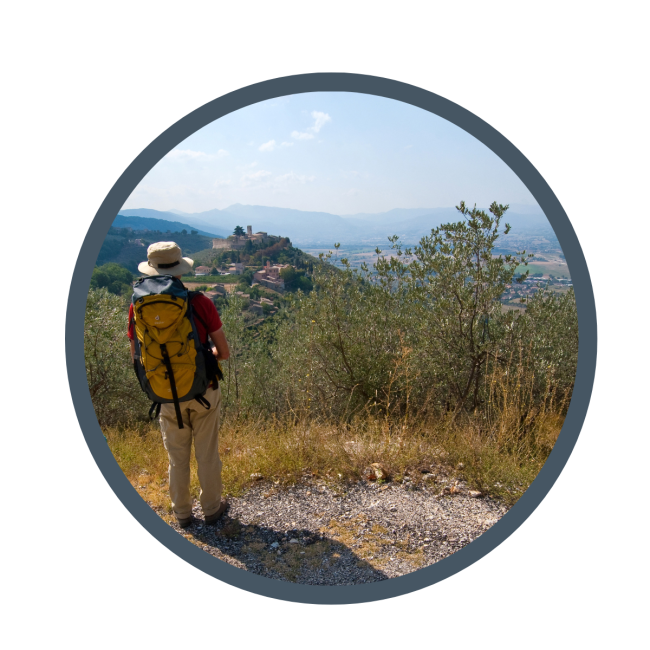
Photo copyright Fabrizio Ardito/Sviluppumbria
Sviluppumbria is the Regional Development Agency of Umbria and is the in-house supporting the Regional Government on policies relating to SMEs creation and boost, internationalisation, EU cooperation, innovation and Tourism.
What is Be.CULTOUR for you?
For Umbria being part of the Be.CULTOUR Community means learning from peers how to make the Greenheart of Italy…greener.
The Region’s main goal is to identify a set of circular values that can be translated into an actual implementation plan aimed at drastically reducing negative impacts produced by cultural tourism along the St.Francis Way, as pilot action for testing a circular economy model applied to all cultural tourism assets in Umbria.
What is the greatest challenge that you are facing in tourism?
To find innovative approaches to urban cultural heritage to promote sustainable mobility and walking/cycling itineraries. As these issues are now more of a priority than ever, due to their ‘natural’ social distancing opportunity in times of COVID, finding the best solutions to the challenges faced by the region (poor interregional connections, hilly cities and territory) is crucial.
To explore solutions and ideas about full accessibility of cultural heritage and assets and connect cities and their heritage with their natural environment.
What is the main strategy/solution you are working towards or achieved in circular cultural tourism?
The main strategy involves the enhancement and promotion of the hiking network (rete dei cammini), a slow way to visit all the main cultural attractions of the Region and enjoy the natural environment. Particular attention is also devoted to the promotion of local borghi. These small hamlets allow for an experience of lesser-known heritage and enjoy the typical Italian way of life as well as the support of cultural events and festivals, attracting visitors all year round.
The St.Francis Way is the primary spiritual itinerary in Umbria and is part of a larger project aimed at connecting all walking, cycling and bridle trails, offering a sustainable mobility alternative to visit heritage without cars. The circular economy approach to this and all other cultural assets of the Region will guide us in identifying the relevant stakeholders, assessing the current gaps, identifying key objectives, develop, and implementing a circularity plan.
Who are the main local stakeholders involved and what are your strategies to involve them?
The St.Francis Way started through a bottom-up approach, as local communities, associations and SMEs joined forces in a spontaneous way in order to provide support to the increasing numbers of walkers and pilgrims that passed through their territories. In 2007 Region Umbria and Sviluppumbria were able to coordinate these efforts though resources made available by the Ministry of Culture and Tourism, but the Way is ‘alive’ only with the involvement of a great number of stakeholders: local bodies, municipalities, SMEs, associations, religious bodies, youth and volunteers groups. Regula meetings among these different entities are held in order to programme the use of resources and funds, coordinate promotional efforts, address enquiries coming from the public and tourists. This multi-level approach is much appreciated not only for its success in maintaining the itinerary, but also by the tourists, who can always find support, help, information or even a glass of water while they walk through Umbria.
Learn more about this mirror ecosystem here.
